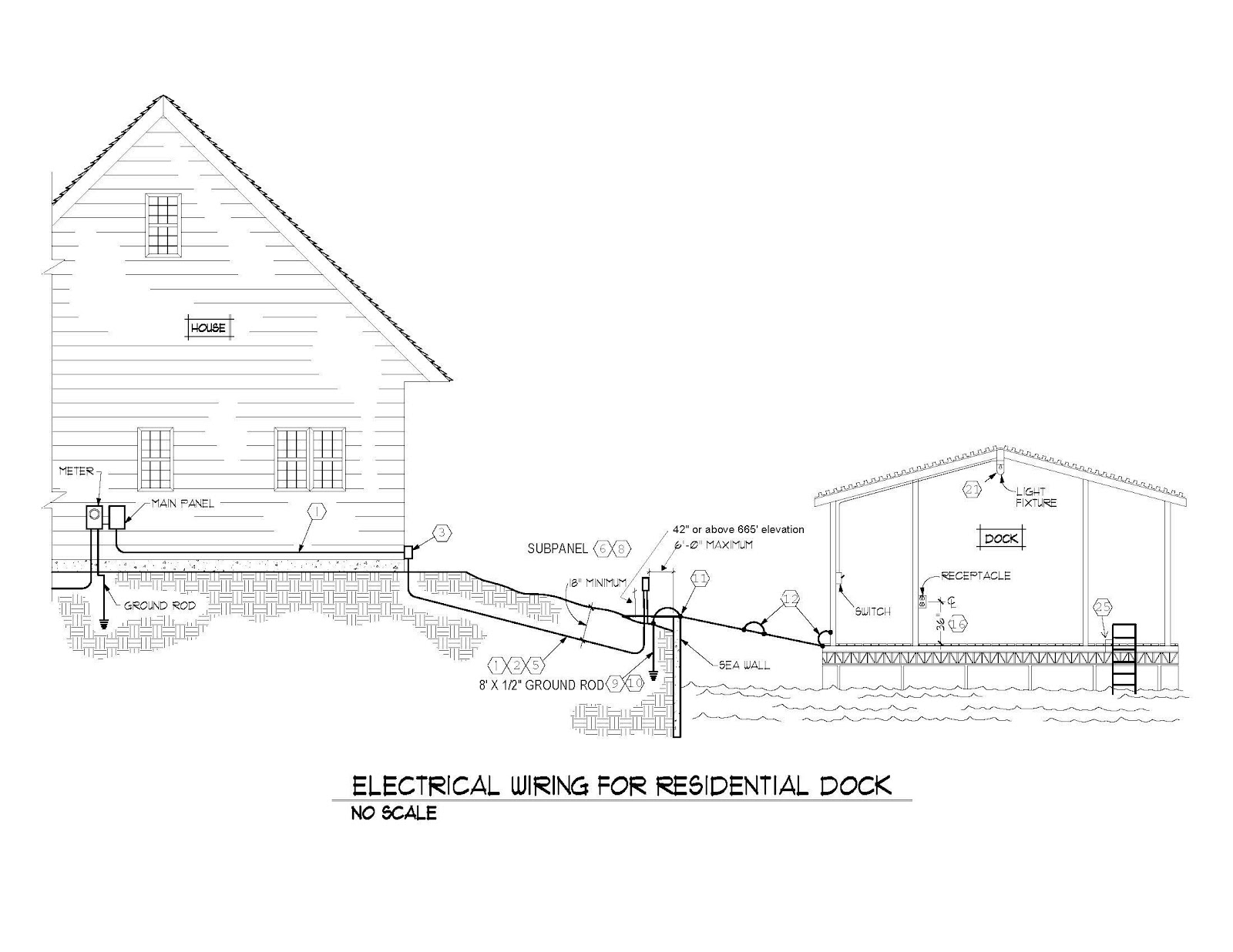Powering Your Paradise: Essential Guide to Boat Dock Electrical Systems

Imagine stepping onto your boat dock, flipping a switch, and instantly illuminating the water around you. No fumbling in the dark, no tripping hazards, just pure convenience and safety. That’s the power of a well-designed boat dock electrical system. Whether you’re a seasoned boater or a waterfront newcomer, understanding the essentials of dockside power is crucial for both enjoying your boat and protecting your investment.
Boat dock electrical systems encompass a range of components, from basic shore power connections to sophisticated setups with lighting, pumps, and even entertainment systems. This essential infrastructure ensures you can power everything from your boat's battery charger to security cameras, adding comfort, security, and value to your waterfront property. But, like any electrical system, dockside power comes with its own set of safety considerations, requiring careful planning and adherence to specific regulations.
Historically, boat docks were simple structures, providing merely a place to tie up a vessel. As boats became more complex and electricity's role in our lives expanded, the need for dockside power became apparent. Early systems were rudimentary, often posing significant safety risks. Today, thanks to advancements in marine electrical technology, we have access to reliable and safe dockside power solutions. Modern boat dock electrical equipment includes GFCI-protected outlets, weatherproof enclosures, and advanced surge protection, minimizing hazards and ensuring dependable performance.
The importance of properly installed boat dock electrical equipment cannot be overstated. It provides convenience, allowing boat owners to easily charge batteries, run appliances, and power onboard systems. Moreover, it enhances safety by illuminating the dock and surrounding area, reducing the risk of accidents. Properly designed dockside electrical systems also play a critical role in protecting your boat and other valuable equipment from electrical surges and other potential hazards. Neglecting this vital infrastructure can lead to costly repairs, equipment damage, and even serious safety risks.
One of the primary issues concerning boat dock electrical equipment revolves around safety. Exposure to the elements, including water and moisture, creates a potentially hazardous environment. Therefore, all dockside electrical installations must adhere to stringent safety codes and regulations designed to mitigate these risks. Using marine-grade components, proper grounding techniques, and regular inspections are essential to ensure a safe and reliable electrical system for your boat dock.
A crucial component of any boat dock electrical system is the Ground Fault Circuit Interrupter (GFCI). GFCIs are designed to protect against electrical shock by quickly shutting off the power in the event of a ground fault. For instance, if a faulty appliance were to fall into the water, the GFCI would instantly trip, preventing a potentially fatal electric shock.
Benefits of a properly installed electrical system include convenience, safety, and increased property value. For example, imagine easily powering your boat's bilge pump without having to run a noisy generator. Or picture the added security of well-lit docks, deterring potential intruders. These are just a few examples of how a reliable electrical system enhances the overall dock experience.
Creating a safe and effective boat dock electrical system requires careful planning. First, assess your power needs. Next, consult a qualified marine electrician to design a system that meets those needs while adhering to all safety regulations. Finally, ensure regular inspections and maintenance to keep the system functioning optimally.
Advantages and Disadvantages of Boat Dock Electrical Equipment
| Advantages | Disadvantages |
|---|---|
| Convenience | Installation Costs |
| Safety | Maintenance Requirements |
| Increased Property Value | Potential Safety Hazards if Improperly Installed |
Best Practices: 1. Use Marine-Grade Equipment. 2. Consult a Qualified Electrician. 3. Implement GFCI Protection. 4. Regular Inspections. 5. Proper Grounding.
FAQ: 1. What type of wiring should I use? (Marine-grade) 2. What is GFCI? (Ground Fault Circuit Interrupter) 3. How often should I inspect my system? (Annually) ...
Tips: Always disconnect power before working on the system. Use waterproof connectors and enclosures. Regularly check for corrosion.
In conclusion, boat dock electrical equipment has revolutionized the waterfront experience, providing unparalleled convenience, enhanced safety, and increased property value. From powering essential boat systems to illuminating the dock for nighttime gatherings, a well-designed electrical system is an invaluable asset. However, safety must remain paramount. By adhering to best practices, consulting qualified professionals, and prioritizing regular maintenance, you can ensure a reliable and secure electrical system for your boat dock, allowing you to fully enjoy the pleasures of waterfront living. Invest in the safety and convenience of your dock today – explore the many benefits of a modern boat dock electrical system and discover the true potential of your waterfront property. Don’t wait until you're left in the dark, take action now to power your paradise.
Sherwin williams mint condition a refreshing take on green
Navigating the waters of malibu boat customer support
Unleash the drama exploring benjamin moore thunder













